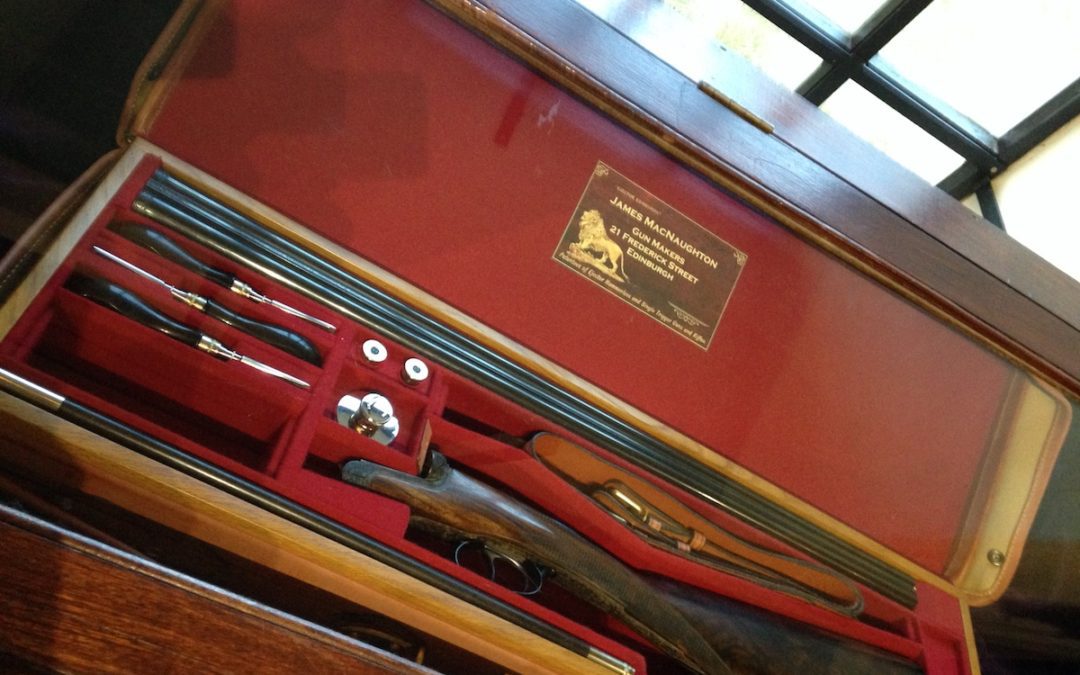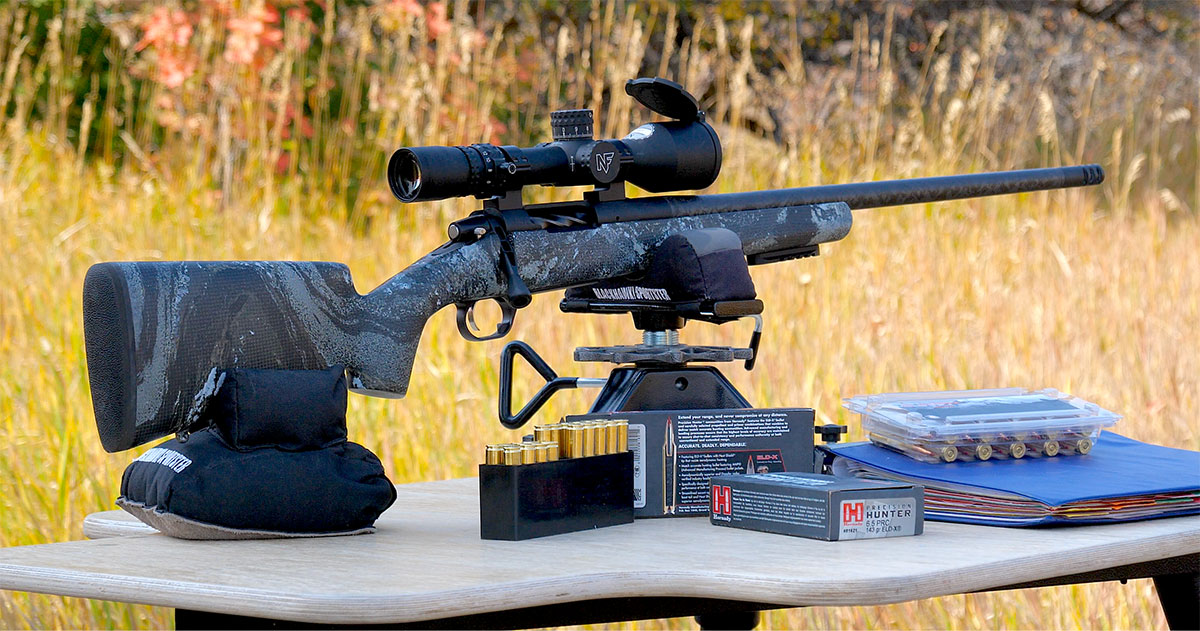Boys grow up to be men, but men always stay boys at heart. On a recent gunning trip to Scotland, I witnessed that return to boyish ways. Between driven and walk-up bird hunting days a group of mature, fully grown, adult American males poured into two very high-quality Scottish gun shops. We all reverted to kids in a candy shop. But the best part about it was that we could look, feel, touch and handle the goods. No “hands off, children” there.
We were encouraged to pick the shotguns up. We brought them to our shoulders, swung them on imagined pheasants, redlegs, grouse, woodcock, ducks, even hare. Purdey, Dickson, W & C Scott, MacNaughton, Fraser, Woodward, Holland & Holland, Churchill, Cogswell & Harrison, Lang, Browning, Beretta and AYA. Side-by-sides and over/unders. Sidelocks, boxlocks, round action, bar-in-wood. Damascus and steel barrels. Twenty, 12-, 16-, 20-, 8- and .410 bores. London-, Birmingham-, Edinburgh-made. Shotgun spoken here – high quality shotgun in a Scottish accent.
We flew into Glasgow on a Friday, most of us were on the same plane from Boston, but two of us arrived later that day. Dave Tilden, our trip leader, stayed at the airport to meet our fellow shooters.
 Pete Stanley, an old hand driving in Scotland, brought the rest of us across the Firth of Clyde to Graham Mackinlay’s gun shop in Strathleven House, an outstanding example of Palladian design. Graham’s gunsmithing operation is on the first floor and his sales area and offices are up an ornate staircase on the second floor. We did not stop to admire the architecture but walked quickly to the guns.
Pete Stanley, an old hand driving in Scotland, brought the rest of us across the Firth of Clyde to Graham Mackinlay’s gun shop in Strathleven House, an outstanding example of Palladian design. Graham’s gunsmithing operation is on the first floor and his sales area and offices are up an ornate staircase on the second floor. We did not stop to admire the architecture but walked quickly to the guns.
As we entered the upstairs shop, I noticed shipping cases for guns stacked in rows against the left wall. The return addresses were from countries in North and South America, Europe and Africa. Shotguns were in racks throughout the shop. Some were for sale and others, clearly labeled with their owner’s name, in for repair, evaluation or restoration.
Graham met us at the door with a warm handshake and a friendly smile. Dan Morgan, the Vermont gunsmith who specializes in English doubles and who is a good friend of both Tilden and Mackinlay, had alerted Graham that American gunners were on the way. We were made very welcome.
I brought up the rear and watched the charge of gunners eager to view Graham’s superb selection. Guns were pulled from racks and glass cases, examined closely and quickly replaced by another quality shotgun. All of us loved doubles and took full advantage of this opportunity to question a skilled Scots gunsmith/dealer on his home ground. Details and more details. Age, chokes, feel, weight, measurements, engraver, condition, restoration, guarantee, export legalities, gun fit and possible adjustments. Much to ask and much to think about. Kids in a candy shop, we stayed for several hours, and then left Dumbarton for our first driven shoot in the morning. One of us would be trying out his new gun.
John Dickson & Son, the firm that manufactured the famed round action shotgun, was founded in Edinburgh in 1820. In 1947 the firm acquired James MacNaughton & Sons, the Edinburgh gun firm known for its bar-in-wood round action design. The Field of 11th May 1907 commented (about the MacNaughton shotgun) “This is perhaps the most elegant gun of all the hammerless guns made. It is a most artistic gun, comfortable and light.”
In 2001 John Dickson & Son moved to its present location north of Edinburgh in The Steadings at Dunkeld. There, three skilled men practice their craft and turn out Dicksons and MacNaughtons, Scots-made round action and bar-in-wood shotguns.
 In the middle of our shooting week at the Drummond Estates after a wonderful morning of driven pheasant and Spanish partridge, Dave Tilden drove four of us north to visit the famed gun shop.
In the middle of our shooting week at the Drummond Estates after a wonderful morning of driven pheasant and Spanish partridge, Dave Tilden drove four of us north to visit the famed gun shop.
Brian Fawcett, Taylor Thompson, Randy Croote and Dave are very knowledgeable shotgun collectors and shooters. I, on the other hand, am a knowledgeable shooter, but a collecting novice.
As we drove past the shooting grounds attached to The Steadings, all of us were excited and eager to see the guns. We had heard about Dickson and MacNaughton round actions for much of our shooting lives and now we were approaching their home grounds.
Once again eager gunners poured into a Scots gun shop. A clerk met us at the door and guided us inside; the gunsmiths were hard at work out of sight in their work area next door.
We eagerly plunged into a room lined with shelves and glass gun racks full of elegant side-by-sides. On the floor were several gun cases holding the stocks and barrels of MacNaughton bar-in-wood shotguns along with the oil containers and turn-screws necessary to service the guns.
The clerk, at Taylor’s request, assembled the bar-in-wood. We passed it around, awed at the workmanship, the balance and the sheer force of the maker’s reputation. Perfect balance and, as I threw it to my shoulder, it settled in as if it belonged there. A little stock correction, and — yeah, in my dreams. But in those dreams since then I have used that shotgun on driven birds, felt the superb balance as the gun mounted and then fired against my cheek, saw redlegs turn into a burst of feathers. A right and a left. Maybe, someday…
We inspected more shotguns. Round actions, bar-in-wood. Dicksons, MacNaughtons and other makers. Balance, bore, age, condition, provenance, restoration, engraver, measurements, possible alterations, we all had questions. And the answers were fascinating. This was a magical place, where alchemy turned wood and steel into art.




